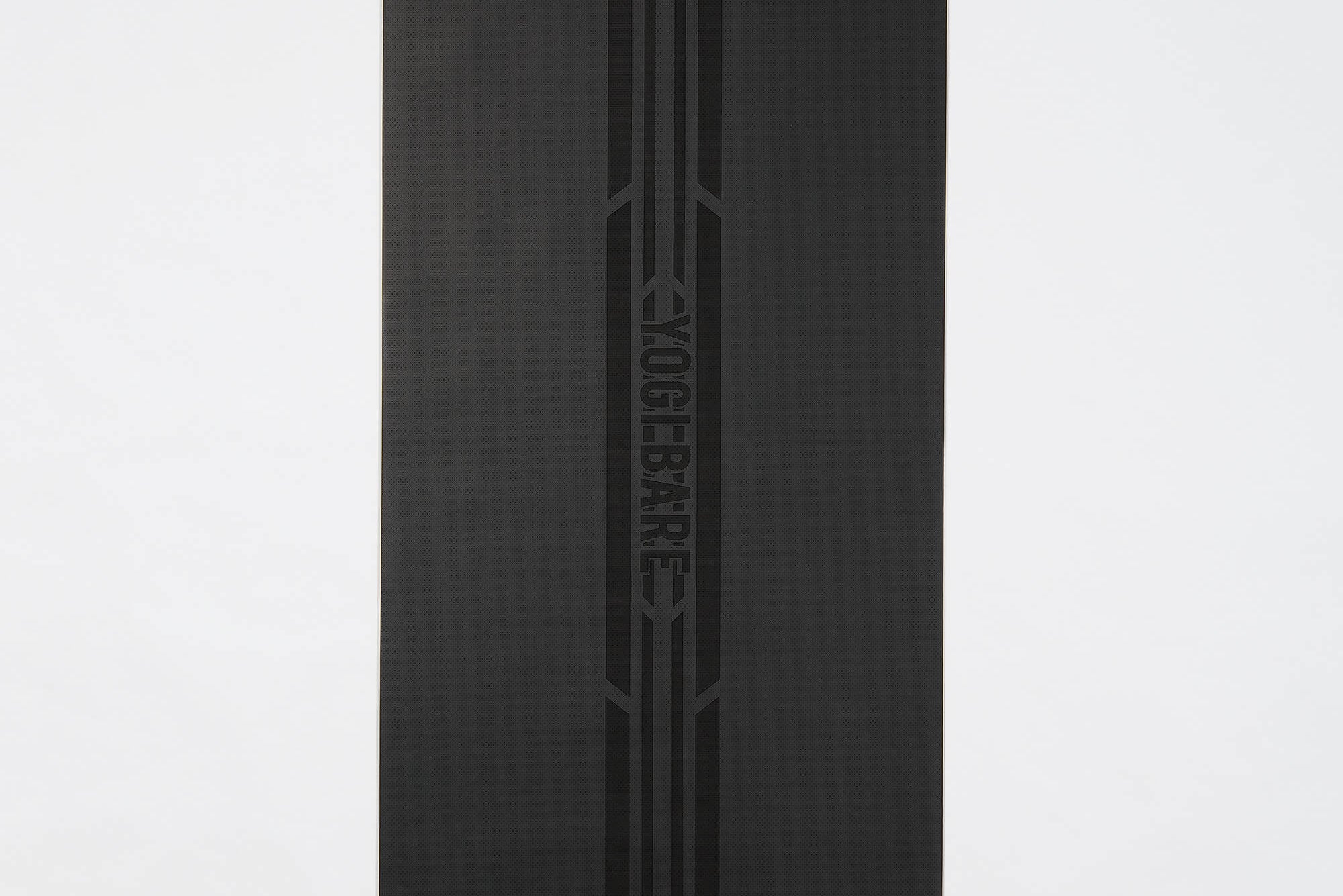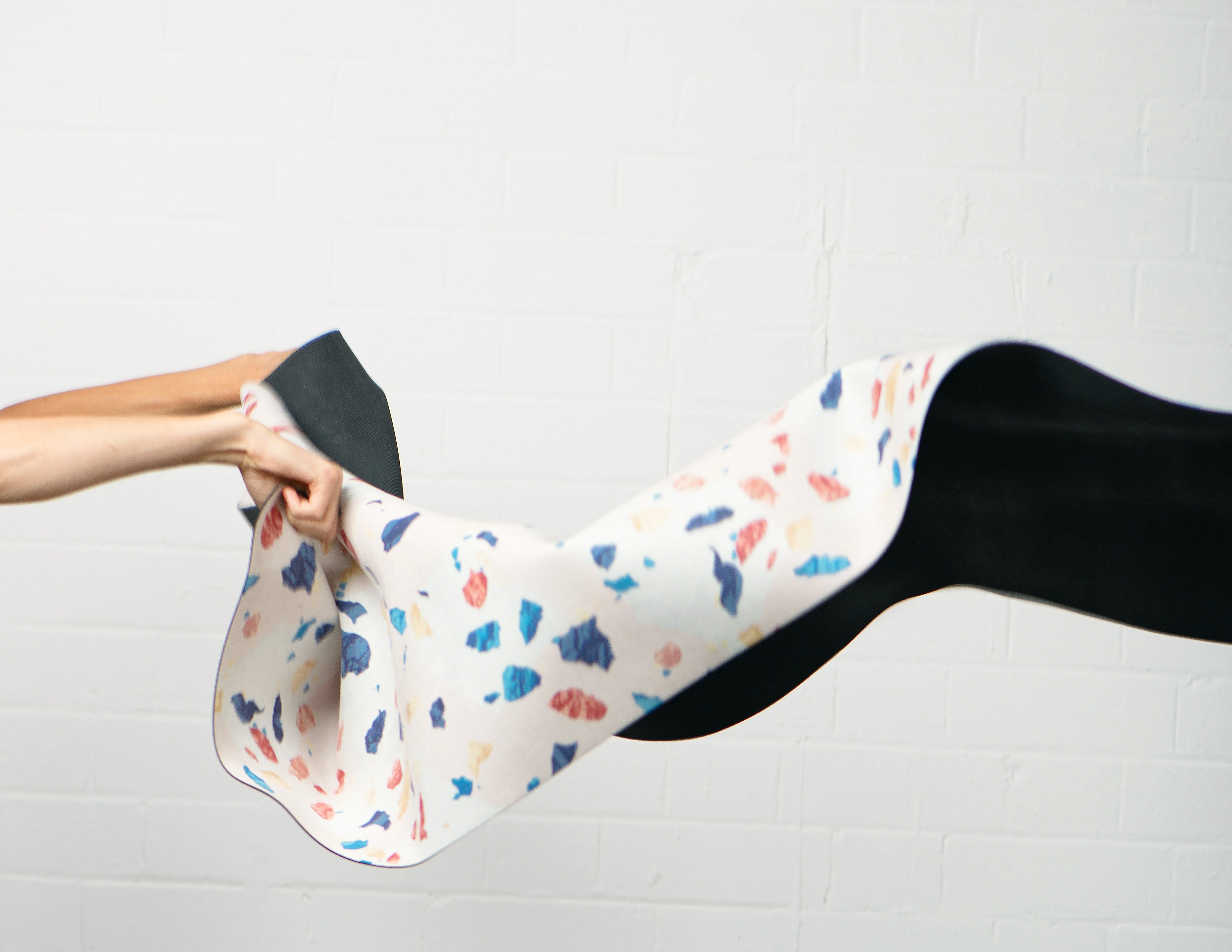Why Flexibility is Good for Yoga
Stretching daily can help to increase flexibility. The more flexible that you become, the easier it becomes to move joints in a direction with less effort and less muscle tension. That means it’s easier and more enjoyable to exercise. Muscles are more relaxed too and posture is also greatly improved. Not just that, but it feels so good to stretch and feel supple. Flexibility is also great for yoga. That’s because it helps with getting into more difficult poses and improves confidence and balance. It also enables you to hold stronger poses. There really are many reasons to improve our flexibility.Yogi Bare Non-Slip Mat
Slipping and sliding can be dangerous and is a common cause of injury. When stretching, its essential to use a non-slip yoga mat. This will also support joints, balance and posture and there’s much less likelihood of injury.We’d recommend trying our Yogi-Bare Paws Non-slip Mat for extreme grip technology or if you prefer a wider mat, Yogi-Bare Paws X Non-slip Mat. These are high-performance non-slip yoga mats, providing superb grip and a 4mm thickness.
Easy Stretches to Make You More Flexible
-
Neck Stretch
Gentle rolling of the neck from one side, then back, then to the other side.
-
Shoulder Rolls
Benefit: Stretches the Trapezius muscles.
Big forward shoulder circles then repeat action rotating them backwards.
-
Side Bends
Benefit: Lengthens both sides of the torso.
A gentle side bend without leaning forwards or backwards.
-
Downward Facing Dog
Benefit: Stretches hamstrings, hips, calves.
A standing pose that incorporates a mild inversion to stretch the body. Fingertips press lightly on the floor, spine and legs invert to create a triangle shape, keeping back of legs and spine lengthened.
-
Lizard Pose
Benefit: Lengthens spine and keeps core engaged.
Normally begins with downward facing dog pose, then stepping right foot to the outside of the right hand. Elbows rest on ground with forearms flat on mat.
-
Standing Forward Fold
Benefit: Stretches hamstrings, hips and calves.
A standing forward bend, head hangs down whilst fingertips touch the floor.
-
Airplane
Benefit: Opens up chest.
Balancing pose that involves standing on one foot, whilst extending the other leg backwards and arms out to the side.
-
Standing Back Arch
Benefit: Stretches spine, chest and the front of the shoulders.
From standing pose, a backwards lean whilst hips remain steady in line with feet and hands clasp in prayer at the chest.
-
Puppy Pose
Benefit: Lengthens spine.
Relaxing backbend that’s a cross between downward facing dog and child’s pose. Starting in tabletop (hands and feet on the floor), hands walk forward, chest lowers towards the ground whilst hips remain lifted over knees.
-
Fallen Triangle
Benefit: Opens up chest and hip.
A mix of side bend and triangle pose, this one can also incorporates a slight backbend.
-
Low Lunge Twist
Benefit: Stretches groins, hip flexors, quadriceps and opens the chest.
A low bended-knee lunge where one hand touches the floor, whilst the other arm reaches to the sky to form a twist.
-
Kneeling Hip Stretch
Benefit: Stretches front of the hip flexors, quads and groin.
Can be performed with one knee on the floor or in a low lunge, weight towards front foot and arms raised straight up above the head.-
Cow Pose
From tabletop position, sit bones and chest are lifted towards ceiling whilst belly sinks towards floor.
-
Cat Cow
Benefit: Widens collarbone (cow) and lengthens neck (cat). Stretches abdominal muscles, back and spine.
Kneeling pose, with hands flat on floor which involves moving the spine from a rounded position to an arched position.-
Plow Pose
Benefit: Stretches neck, shoulder and back.
Lying down on back, bring legs over head with tips of toes touching the floor.
-
Baby Cobra
Benefit: Stretches abdominals and spine.
A stretch that begins by lying face down on the floor, chest lifts up and neck and head rises.
-
Thread the Needle
Benefit: Stretches side and back of shoulder and upper back.
A position that starts on all fours and ends with the right arm under the chest whilst left arm extends over the head.
-
Staff Pose
Benefit: Stretches legs, chest and shoulders.
Provides basic alignment for seated poses, sitting on sit bones, legs extended in front, whilst fingertips lightly touch floor and spine lengthens.
-
Pigeon Pose
Benefit: Stretches hip flexors and deep lateral rotators.
Intense seated hip stretch where left leg stretches out behind the body whilst right knee is brought forward towards right wrist.
-
Butterfly
Benefit: Stretches hip, groin, and lower back.
A sitting pose where soles of feet press together in front whilst hands hold onto the outside of them, allowing knees to fall out to the side.
-
Seated Twist
Benefit: Stretches spine and hips.
Another sitting pose where soles of feet are pressed together, torso twists to one side, with one arm behind back and other arm resting on knee.
-
Sitting Hamstring Stretch
Benefit: Stretches hamstring, lower back.
Sitting with either one or both legs extended, back straight, leaning into the stretch, reach fingertips towards the tips of toes.
-
Seated Forward Fold
Benefit: Stretches entire back of body.
A classic sitting yoga stretch, where arms are brought up and over head, then reaching towards feet keeping spine long, touching or hold feet where feasible.
-
Splits
Benefits: Stretches the thighs, opens the hip flexors
It can be a daunting stretch because it requires flexibility in the glutes, calves, quads, hamstrings and hips. Don’t feel intimidated though. By increasing your flexibility over time, you’ll be able to work towards achieving the full splits. Read our guide on 6 stretches to get you into the full splits in 4 weeks.
-
Toe Fanning
Benefit: Stretches intrinsic foot muscles.
While sitting, lift toes so they’re at the same height, spread as far apart for five seconds before relaxing.



Leave a comment